 You drive a Prius (or it drives you), you only use fur from renewable animals that aren’t clubbed to death, you release all your fish, police your candy bar wrappers, and field strip your cigarette butts so only the wind knows of your passing …
You drive a Prius (or it drives you), you only use fur from renewable animals that aren’t clubbed to death, you release all your fish, police your candy bar wrappers, and field strip your cigarette butts so only the wind knows of your passing …
You wear rubber soles and sterile gear for fear of leaving anything behind, and crap a couple of miles from any trace of moisture – using handfuls of leaves or Poison Oak rather than man-made anything.
Yet all that toil and effort is for naught, because you’re still responsible for global warming.
Cow farts and pollution are the primary and secondary offenders, but as we slowly relinquish our grip on fossil fuels and feed bovines something other than their ground up cousin – and then only the parts we’re scared of – fly fishermen will become poster children for selfishness and environmental genocide, as well as propagating all those noxious gases burrowing through the ozone layer …
Spin and bait fishermen have lived up to their end, and likely as not are armed with spoiled produce to heave in our direction. All those years of “purest form of fishing – nose in the air – snootiness” will come back as half eaten or half rotten fastballs.
Not because we’re creating the gases, although this post and most parking lot recitals add measurably to global warming, it’s because we venerate the Unclean Thing, never to grace our hook with That Which Lacks Legs…
Studies of soil-dwelling earthworms had showed that the creepy crawlies emitted nitrous oxide because of the nitrogen-converting microbes they gobbled up into their guts with every mouthful of soil.
Peter Stief, of the Max Planck Institute for Marine Microbiology in Germany, and his colleagues noticed that no one had ever looked for similar nitrous oxide emission in aquatic animals, so that’s where they turned their attention.
“We were looking for an analogy in the aquatic system,” Stief said.
The researchers found that in a variety of aquatic environments, animals that dug in the dirt for their food did indeed emit nitrous oxide, thanks to the bacteria in the soil they ate, which “survive surprisingly well in the gut environment,” Stief told LiveScience.
– via Fox News / Live Science
It’s bad enough that the aquatic worm views a Whirling Disease microbe like a T-Bone, and adds insult to injury by becoming a host and farting uncontrollably …
Nitrogen rich fertilizers seeping into the watershed from evil ranchers and farmers – causing hideous, sustained mayfly and caddis flatulence – and all the Hex nymphs eaten despite their deep burrow as truly selective trout can spot the bubbles forty yards distant …
Scratch a third of the mayfly genus’s and anything else that burrows.
Tags: Nitrous Oxide, Ozone, Global Worming, Worm farts, mayfly flatulence, fly fishermen, fossil fuels, hexagenia limbata


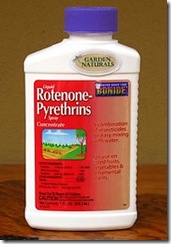
 You drive a Prius (or it drives you), you only use fur from renewable animals that aren’t clubbed to death, you release all your fish, police your candy bar wrappers, and field strip your cigarette butts so only the wind knows of your passing …
You drive a Prius (or it drives you), you only use fur from renewable animals that aren’t clubbed to death, you release all your fish, police your candy bar wrappers, and field strip your cigarette butts so only the wind knows of your passing …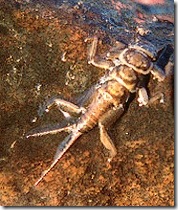 Confirmation of what we’ve always suspected, that with the climb in water temperature due to summer’s heat, and corresponding decline in dissolved oxygen, that stoneflies migrate to the faster flows where the oxygen is again plentiful.
Confirmation of what we’ve always suspected, that with the climb in water temperature due to summer’s heat, and corresponding decline in dissolved oxygen, that stoneflies migrate to the faster flows where the oxygen is again plentiful. –
–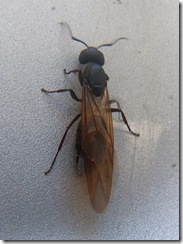
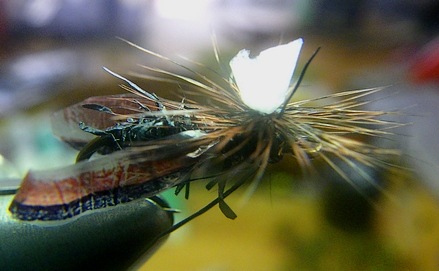
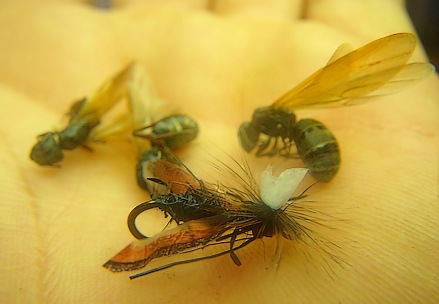
 Ask any kid old enough, and he’ll be the first to tell you that eggplant sucks, along with most leafy greens, tubers, and anything else Ma insists he eat before the dessert course …
Ask any kid old enough, and he’ll be the first to tell you that eggplant sucks, along with most leafy greens, tubers, and anything else Ma insists he eat before the dessert course … Fishermen have always put catching far above creature comforts as it makes the story twice worthy of the retelling.
Fishermen have always put catching far above creature comforts as it makes the story twice worthy of the retelling.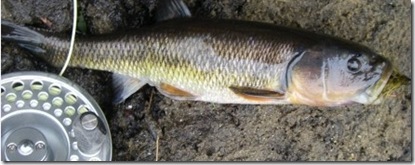
 Most of us anglers are oblivious to what goes on in all those streambed nooks and crannies. We’re content so long as it emerges at dusk and exists in enough numbers to keep fish fat and healthy.
Most of us anglers are oblivious to what goes on in all those streambed nooks and crannies. We’re content so long as it emerges at dusk and exists in enough numbers to keep fish fat and healthy.